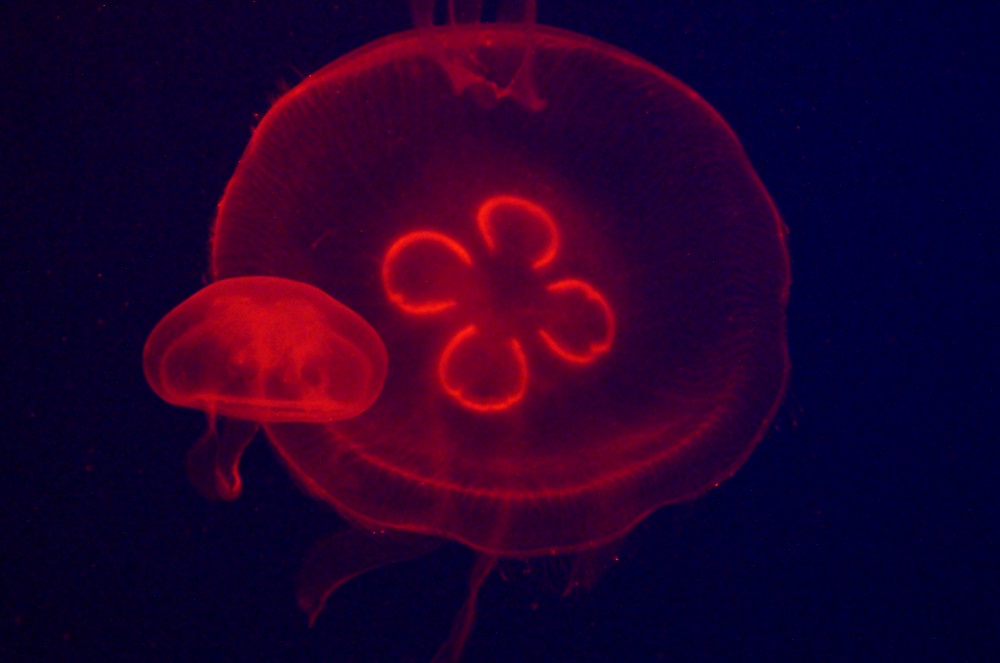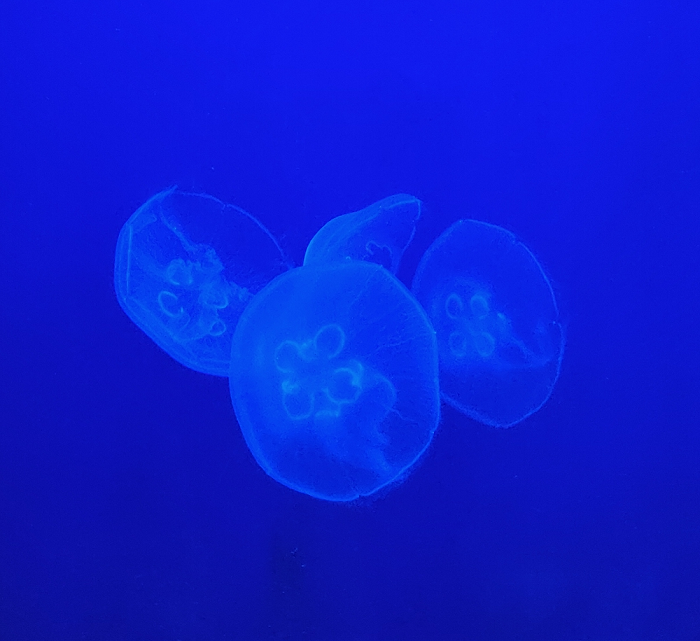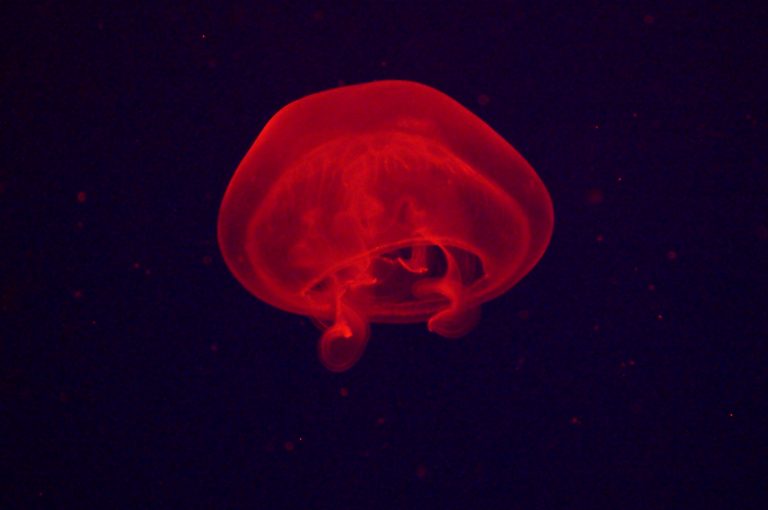
Moon Jellyfish (Aurelia aurita) live in most of the world’s oceans. They are one of the most common species of jellyfish found around the UK shoreline.
They are easily spotted as they float close to the surface of the water in groups, called ‘smacks’ where they use the water’s currents to move through the water. They have a translucent bell and a fringe of well recognised stinging tentacles. Moon Jellyfish can be distinguished by their four purple coloured horseshoe shapes in their bell, however these can alter in colour depending on their diet.
DID YOU KNOW: Jellyfish are bioluminescent which means they glow in the dark!
Moon Jellyfish can opportunistically eat anything that passes by, they have a large stomach, which is beneficial as they do not swim very well they can gain nutrients to sustain them whenever they are available. Interestingly they are omnivores eating anything from molluscs and plankton, to fish eggs and shrimps. They catch prey in their stinging tentacles called nematocysts and guide the food towards their mouth in the middle.
Jellyfish are 95% water and have no brain, blood or heart. They simply have a digestive system and a nervous system. They don’t even use organs to breathe, and instead breathe through their bell membrane.
Moon Jellyfish have a wide variety of predators, however their numbers continue to rise as a result of overfishing these predators.
Jellyfish are in the same family as coral and sea anemones, start life as small polyps which join together top form the jellyfish. They then differ from the coral and anemones because they enter the medusa stage of their life where they can move around. They live only around 6months as they break off polyps from their own bodies to reproduce which takes a lot of energy, a process known as strobilation. As they essentially clone themselves, they can be described as having the ability to live forever.
Type
Invertebrate
What do they eat?
Plankton, molluscs and fish eggs
Size
Around 20cm
Water Type
Marine
Where are we?
All over the World


